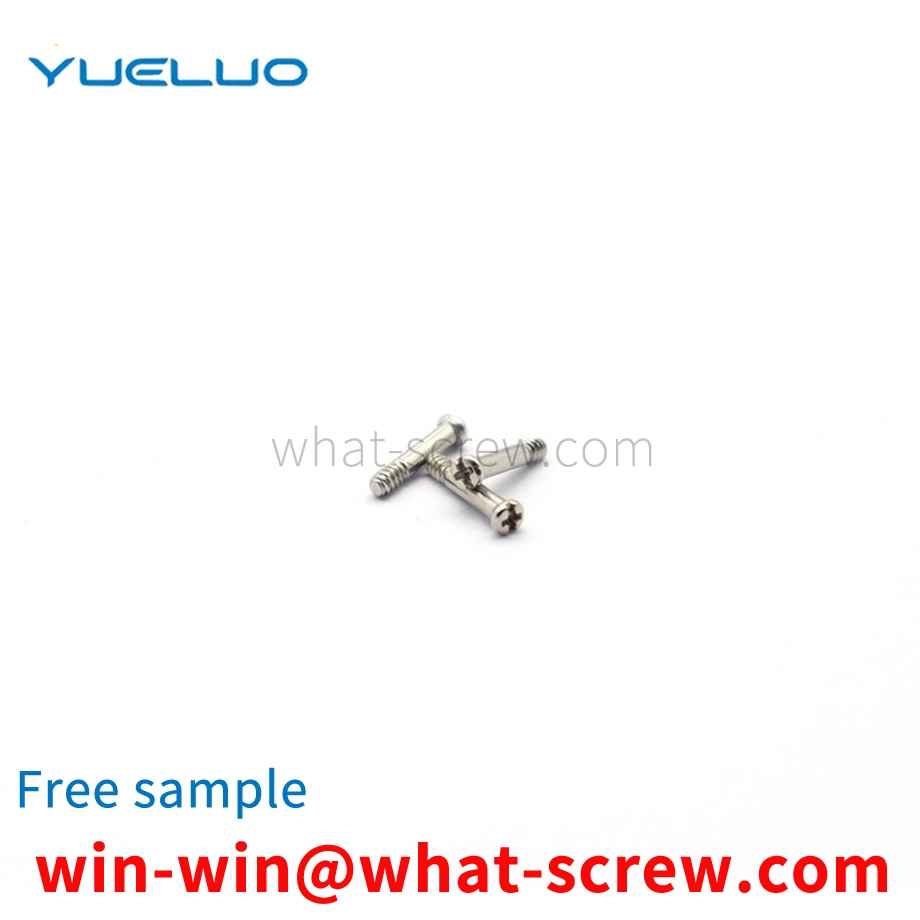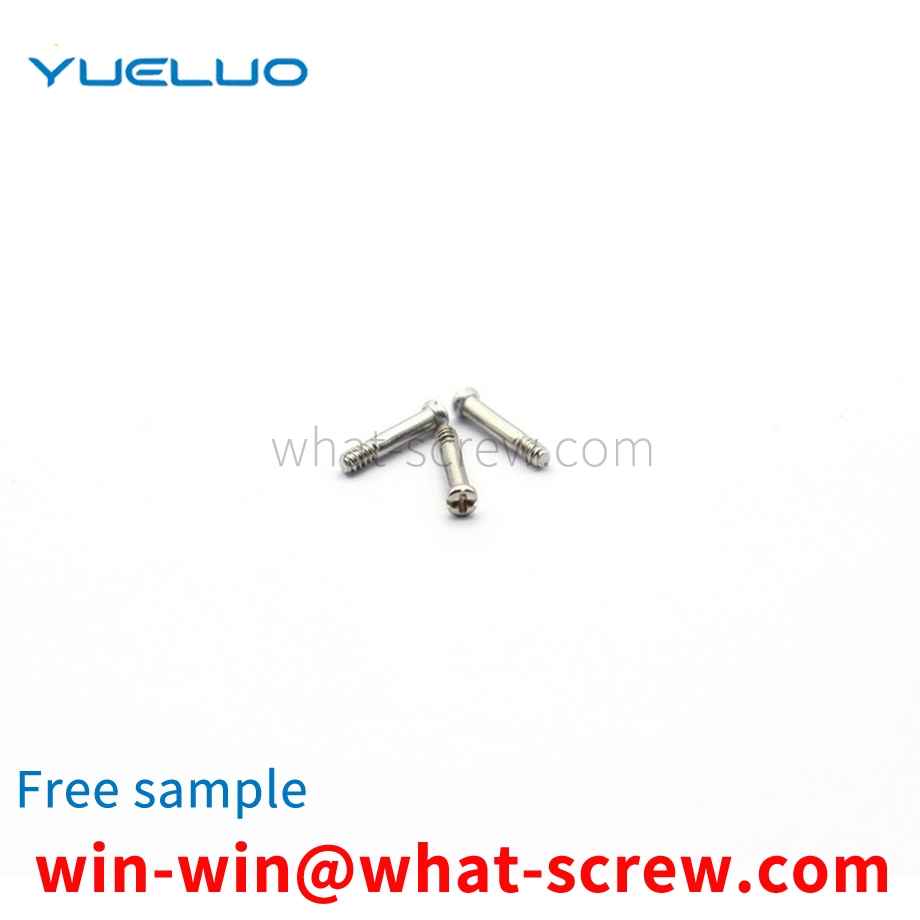When the countersunk head screws and hexagon socket head bolts are produced by the cold heading process, the original structure of the steel will directly affect the forming ability of the cold heading process. In the process of cold heading, the plastic deformation of the local area can reach 60%-80%, so the steel must have good plasticity. When the chemical composition of the steel is constant, the metallographic structure is the key factor to determine the plasticity. It is generally believed that the coarse flaky pearlite is not conducive to cold heading forming, while the fine spherical pearlite can significantly improve the plastic deformation ability of the steel. For medium carbon steel and medium carbon alloy steel with a large amount of high-strength bolts, spheroidizing (softening) annealing is performed before cold heading, so as to obtain uniform and fine spheroidized pearlite to better meet the actual production needs. For the softening annealing of medium carbon steel wire rods, the heating temperature should be kept above and below the critical point of the steel, and the heating temperature should not be too high, otherwise tertiary cementite will precipitate along the grain boundary, resulting in cold heading cracking. The wire rod of medium carbon alloy steel is annealed by isothermal spheroidization. After heating at AC1+ (20-30%), the furnace is cooled to slightly lower than Ar1, the temperature is about 700 degrees Celsius for an isothermal period, and then the furnace is cooled to about 500 degrees Celsius and air-cooled. The metallographic structure of the steel changes from coarse to fine, from flake to spherical, and the cracking rate of cold heading will be greatly reduced. The general area of softening annealing temperature for 35\45\ML35\SWRCH35K steel is 715-735 degrees Celsius; while the general heating temperature for spheroidizing annealing of SCM435\40Cr\SCR435 steel is 740-770 degrees Celsius, and the isothermal temperature is 680-700 degrees Celsius.
The purpose of this utility model is to solve the problems in the prior art, and proposes an installation structure which adopts T-bolt and groove matching, which can make the installation of the bolt more convenient, the degree of tightening is higher, the service life is longer, and the Routine replacement and maintenance.
The production process of rivet nuts is basically similar to that of other screws. It's just that the screws are punched out with a screw pier, and the nuts are punched out with a nut pier. Introduce the production process of rivet nuts. 1. First, it is necessary to determine what material and material the rivet nut is, so that we can use what material to produce and what material to use. Knowing what materials and materials are used, we can buy screw wires. 2. Determine the size and length of the rivet nut. This is the best way to use a large screw wire. 3. After determining the material, material, size and type, we need to see if it is a commonly used rivet nut. If so, there must be a corresponding mold in the factory. If not, it is non-standard, then we have to order molds. 4. After everything is ready for production, it is necessary to use the nut machine to punch out the shape of the rivet nut, that is, the appearance. 5. After the pier is punched out, use the machine for tapping the nut teeth to tap it. 6. After the thread is tapped, electroplating is performed. The stainless steel rivet nut does not need electroplating, it only needs to be cleaned. If you want to electroplate other colors, you have to take it to a professional electroplating manufacturer for electroplating treatment.
At present, the standard parts on the market mainly include carbon steel, stainless steel and copper. A carbon steel. We distinguish low carbon steel, medium carbon steel and high carbon steel and alloy steel by the content of carbon in carbon steel material. 1 Low carbon steel C%≤0.25% is usually called A3 steel in China. Foreign countries are basically called 1008, 1015, 1018, 1022, etc. Mainly used for grade 4.8 bolts, grade 4 nuts, small screws and other products without hardness requirements. (Note: 1022 material is mainly used for drill tail screws.) 2 Medium carbon steel 0.25% 3 High carbon steel C%>0.45%. 4 Alloy steel is basically not used in the market: alloying elements are added to ordinary carbon steel to increase some special properties of steel: such as 35, 40 chromium molybdenum, SCM435, 10B38. Fangsheng screws mainly use SCM435 chromium molybdenum alloy steel, the main components are C, Si, Mn, P, S, Cr, Mo. Two stainless steel. Performance grade: 45, 50, 60, 70, 80 1 Mainly divided into austenite (18% Cr, 8% Ni) with good heat resistance, good corrosion resistance and good weldability. A1, A2, A4 2 Martensite, 13%Cr have poor corrosion resistance, high strength and good wear resistance. C1, C2, C4 ferritic stainless steels. 18%Cr has better upsetting and corrosion resistance than martensite. The imported materials on the market are mainly Japan. According to the level, it is mainly divided into SUS302, SUS304 and SUS316. Three coppers. Commonly used materials are brass...zinc-copper alloys. The market mainly uses H62, H65, H68 copper as standard parts.
Stainless steel usually refers to steel that has the ability to resist corrosion by air, water, acid, alkali salt or other medium. Depending on the alloy composition, the focus is on rust resistance and acid resistance. Although some steels are rust-resistant, they are not necessarily acid-resistant, and acid-resistant steels are usually rust-resistant. Austenitic stainless steel is mainly used in the production of fasteners. In people's daily life, the stainless steel often referred to is also austenitic stainless steel. The stainless steel fasteners we use are mainly made of austenitic 302, 304, 316 and low nickel 201 as raw materials.
We have many years of experience in the production and sales of screws, nuts, flat washers, etc. The main products are: shaft 6mm positioning pins, copper core through-hole blind hole hand-tight nuts, cylinder head screws, JB4756 bolts and other products, we can provide you with products suitable for you fastener solutions.



















 Service Hotline
Service Hotline




